Since Dustin Angelo joined junior gold producer Anaconda Mining (TSX: ANX) as president and CEO in September 2010, he and his management team have grown the company’s footprint on the island of Newfoundland through option deals and staking from 7 to nearly 200 sq. km across four projects.
Angelo has also been busy trying to grow the company through mergers and acquisitions (M&A), and picked up Anaconda’s first project in Nova Scotia — Goldboro — through the acquisition of Orex Exploration earlier this year.
“We’ve always had a two-pronged approach: standard organic growth through options, staking and exploration, and mergers and acquisitions,” he says in an interview. “Now we have a complete pipeline of projects — from grassroots all the way to production.”
“We’ve got 1 million oz. in our portfolio between all these projects and between measured and indicated and inferred, and we see potential to have a significant growth profile over the next three to five years.”
At Point Rousse, Anaconda’s flagship asset on the Ming’s Bight Peninsula in Newfoundland’s Baie Verte mining district, a small open-pit mine has been turning out 16,000 oz. gold annually since it reached commercial production in August 2010, and Angelo says the company can drive that number to 50,000 oz. gold from both its Point Rousse and Goldboro projects by 2020.
He also sees potential to increase the resource estimate at its recently acquired Goldboro project in Nova Scotia and barge ore from that project to feed the company’s Pine Cove mill at Point Rousse. (Barging the ore 690 nautical miles to Point Rouse would take four to five days.)
Goldboro is 2 km from tidewater and 185 km northeast of Halifax. It has a measured and indicated resource of 2.56 million tonnes grading 5.57 grams gold for 457,000 oz. gold and another 2.67 million inferred tonnes grading 4.35 grams gold for 372,900 oz. gold.
“There’s potential to expand Goldboro at depth and then along strike,” Angelo says. “We’ve gone a maximum of 350 metres vertical depth at Goldboro, so there’s potential to extend it further down. There’s no geological reason why the orebody would stop at 350 metres.”

Dustin Angelo, president and CEO, Anaconda Mining.
Angelo adds that “there are similar styles of geology and mineralization and geologic models in Australia, where these saddle-reef structures have been found and mined down to about 1.2 km, so if the same features hold, we’ve only gone 350 metres and there’s potential to extend it further down.”
There is also potential along strike east and west at Goldboro, where Osisko Gold, Orex’s previous joint-venture partner, had drilled in 2010 and 2011. The drill results were never included in the resource estimate because the spacing was too wide.
“There are geophysical anomalies and drilling from Osisko that suggest the orebody continues east and west along strike,” Angelo says, adding that Anaconda expects to complete a preliminary economic assessment of Goldboro by year-end.
The strategy is to leverage Anaconda’s infrastructure in Newfoundland, including a fully owned port facility at Point Rousse, and open up deposits that can supply ore to its mill. “We have a lot of operating infrastructure in place,” he says. “We have a mill and a tailings facility, and the tailings facility will have a 15-year capacity, once the Pine Cove open-pit mine is mined out.”
“The idea is for us to try to acquire or build other projects where they may not be economically viable as stand-alone operations because there isn’t enough resource to support the capital needed to build a full-scale mill or tailings facility,” he says. “We’ll still have to build infrastructure in certain places, but the idea is not to build 100% of it. That way we can lower capital costs and perhaps put projects into production on a shorter timeline, and use the infrastructure to grow the company.”
On the exploration front, drilling at its Argyle deposit, which it found two years ago, 4.5 km from the mill, has expanded the mineralization zone down-dip and to the northeast.

A gold doré pour at Anaconda’s Point Rousse gold project. Credit: Anaconda Mining.
Drill results released on July 13 include 3.63 grams gold over 12 metres starting from 58 metres deep; 3.22 grams gold over 4 metres from 45 metres deep; 1.56 grams gold over 3 metres from 77 metres deep; and 1.22 grams gold over 4 metres from 86 metres down hole.
“We’re seeing good grade and wide intersections — big widths here,” he says.
Since initial trenching and two phases of diamond drilling began at Argyle in 2016, Anaconda has found a shallow-dipping, near-surface (less than 100-vertical-metre) mineralized gold system with a more than 600-metre strike length and down-dip extension to 225 metres. Argyle remains open both along strike and down-dip. Anaconda has already done internal resource modelling, preliminary planning and permitting activities for Argyle.
The company also plans to add ore from its Stog’er Tight deposit, 3 km from its mill, starting from the winter of 2018. Anaconda optioned Stog’er Tight in 2012, and the deposit has an indicated resource of 204,100 tonnes grading 3.59 grams gold for 23,540 contained oz. metal, and an inferred resource of 252,100 tonnes averaging 3.27 grams gold for a total of 26,460 ounces.
The company is cash-flow positive, and in the last six fiscal years its Point Rousse project has generated $40 million in project-level earnings before interest, taxes, depreciation and amortization.
“Over the next few years, Anaconda is well positioned for mineral resource expansion, production increases and further consolidation in Atlantic Canada,” Angelo says. “We have the platform to be a major player in the Atlantic Canada gold space.”

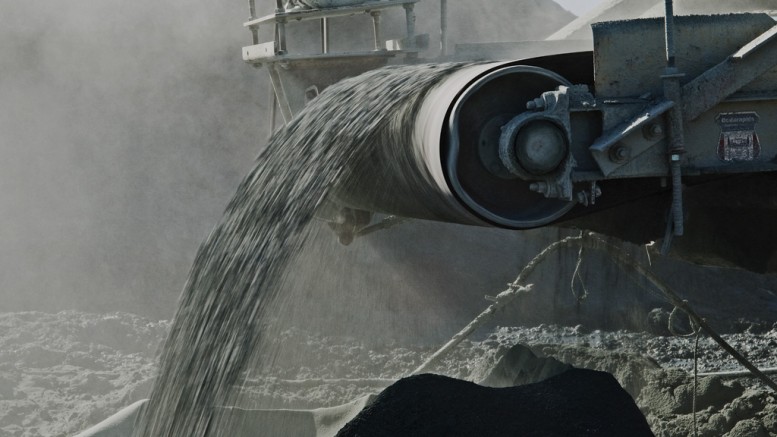
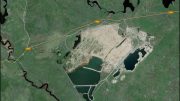
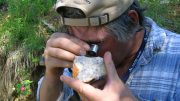
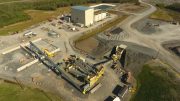
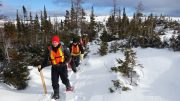
Be the first to comment on "Anaconda Mining branches out in Atlantic Canada"